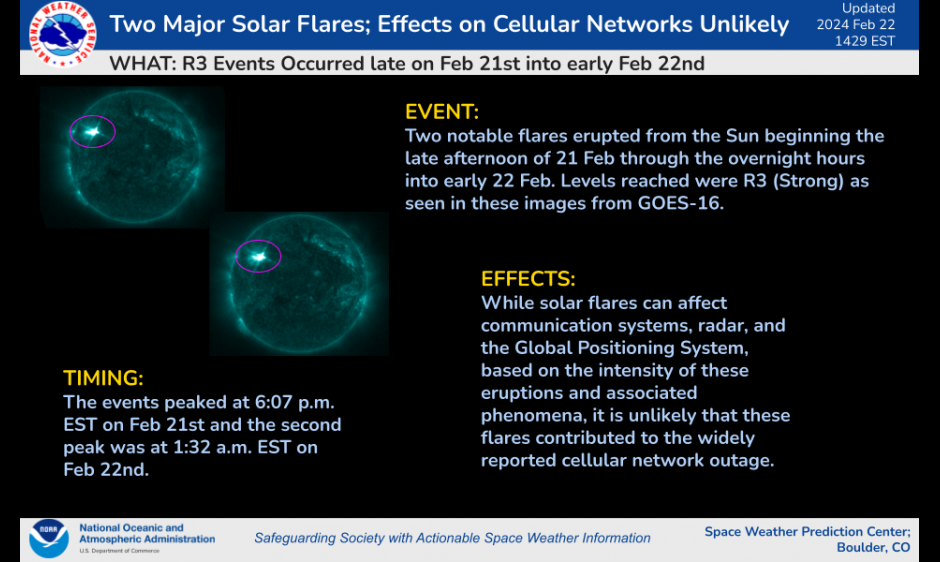
Two Major Solar Flares; Effects on Cellular Networks Unlikely
The Sun emitted two strong solar flares (both R3 on the NOAA Space Weather Scales), the first one peaking at 6:07 p.m. EST on Feb. 21, 2024, and the second peaking at 1:32 a.m. EST on Feb. 22, 2024.
While solar flares can affect communication systems, radar, and the Global Positioning System, based on the intensity of the eruption and associated phenomena, it is highly unlikely that these flares contributed to the widely reported cellular network outages.
NOAA and SWPC will continue to monitor the solar and near-Earth space environment for potential impacts to critical infrastructure and essential services.